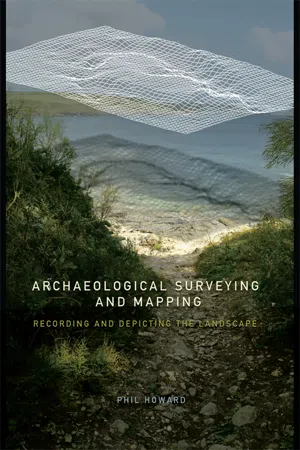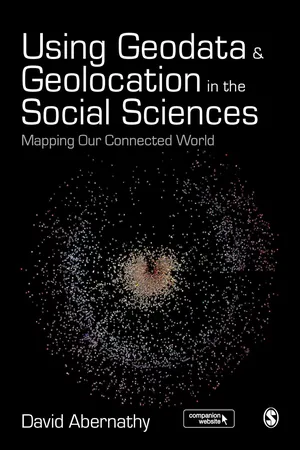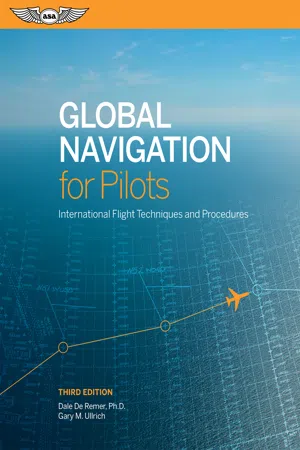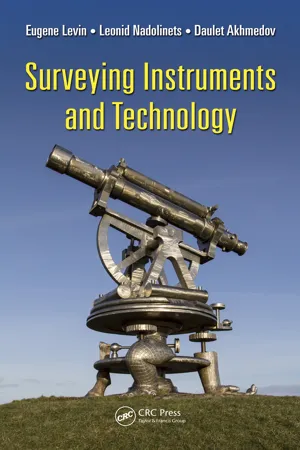Geography
GPS
GPS, or Global Positioning System, is a satellite-based navigation system that provides location and time information anywhere on Earth. It consists of a network of satellites that transmit signals to GPS receivers, allowing users to determine their precise position. GPS is widely used in geography for mapping, surveying, and navigation purposes.
Written by Perlego with AI-assistance
Related key terms
10 Key excerpts on "GPS"
- eBook - ePub
- Joel McNamara(Author)
- 2008(Publication Date)
- For Dummies(Publisher)
Par t II All About GPSIn this part . . .GPS stands for Global Positioning System, which is a nifty satellite system that tells you your location anywhere on planet earth (with a few limitations). This part is all about GPS. We start with a broad overview of the satellite system and then work back down to earth and discuss handheld, consumer GPS receivers. By the end of the part, you’ll understand the technology behind GPS (without needing to be a rocket scientist), be able to evaluate the jungle of GPS receivers on the market, and have the skills and knowledge to make practical use of a GPS receiver without being intimidated or confused by it.Passage contains an image
Chapter 3 GPS Fundamentals In This Chapter Understanding how GPS works Getting to know GPS capabilities and limitations Types of information you can get from a GPS receiver Getting familiar with common GPS receiver features Looking into the future of GPSYou’ve heard about GPS and probably know that it has something to do with electronic gadgets and satellites that tell you where you’re located. That’s great for starters, but you need a more detailed understanding to use GPS. This chapter takes you through some of the fundamentals of GPS so you have a better grasp of what it is and how you use it.Global Position What?GPS stands for Global Positioning System. A special radio receiver measures the distance from your location to satellites that orbit the earth broadcasting radio signals. GPS can pinpoint your position anywhere in the world. Pretty cool, huh? Aside from buying the receiver, the system is free for anyone to use.You can purchase an inexpensive GPS receiver, pop some batteries in it (or plug it into your car’s cigarette lighter), turn it on, and presto! Your location appears on the screen. No paper map, compass, sextant, or sundial is required. Just like magic. It’s not really magic though; it’s evolved from some great practical applications of science that have come together over the last 50 or so years. - Major Lawrence W. McLaughlin(Author)
- 2015(Publication Date)
- Tannenberg Publishing(Publisher)
III. GLOBAL POSITIONING SYSTEM
A. INTRODUCTION
For thousands of years men have been navigating this planet by a variety of ingenious means. A navigational technique developed by the ancient Polynesians is the use of natural stars (Parkinson & Spilker, 1996). This method involved triangulating your position from the known location of the stars. After the development of radio technology, new methods of navigation were introduced. These methods included radio beacons, Vhf Omnidirectional Radios (VORs), and LOng-range RAdio Navigation (LORAN) (Parkinson & Spilker). Much like navigating by the stars, radio navigation involved finding one’s relative position in reference to a known position—in this case a radio transmitter. Both of these systems had significant drawbacks. To navigate using the stars, the weather had to be clear enough to see them. To navigate using radio beacons, the user had to be within line-of-sight of the transmitter which limited the range of operations. With the introduction of artificial satellites, both of these limitations seemed to have been solved.Artificial satellites made possible a revolution in navigation. Instead of using angular measurements to natural stars, a plan was developed by a small group in the Department of Defense to use ranging measurements from artificial stars (satellites) to greatly improve accuracy and virtually eliminate the problems of line-of-sight caused by natural and man-made obstructions. This led to the birth of the Global Positioning System, more commonly referred to as GPS.The Global Positioning System was developed by the US Department of Defense for military users. It took over two decades and ten billion dollars to deploy the twenty-seven satellite system (Pace et al., 1995). The benefits of GPS are enormous. GPS provides highly accurate navigation and positioning for a variety of military equipment, including aircraft, ships, land vehicles, and most recently precision-guided munitions (PGMs). US forces have come to rely heavily on uninterrupted access to GPS as it has emerged as an integral component of almost every military system. A recent RAND report states that, “The US military is moving toward high reliance on GPS, and force structure decisions are being made that assume GPS availability” (Pace et al., 1995, p. xvii). For example, Congress has ordered that any aircraft, ship, armored vehicle, or indirect-fire weapon not equipped with GPS after the year 2000 will not be funded (Pace et al.). These developments carry obvious benefits, but there are risks as well. The more reliant we become on a continuous GPS signal, the more vulnerable we are when that signal is disrupted. The military, furthermore, is not the only organization that is increasingly relying on GPS coverage.- eBook - ePub
U.S. Conflicts in the 21st Century
Afghanistan War, Iraq War, and the War on Terror [3 volumes]
- Spencer C. Tucker, Spencer C. Tucker(Authors)
- 2015(Publication Date)
- ABC-CLIO(Publisher)
Navigation Satellite Timing and Ranging Global Positioning SystemA constellation of 31 orbiting satellites, 6 in each of four orbital planes, that produce an extremely precise timing signal for use in determining accurate position information in three dimensions in all weather conditions on a receiver located on Earth’s surface. A Global Positioning System (GPS) receiver picks up the signals from the 4 satellites with the strongest signal and then calculates its position by carefully timing the signals sent by the GPS satellites and using the arrival time of each message to measure the distance to each satellite. Using geometric and trigonometric calculations, it then determines the position (coordinates) of the receiver and converts them to longitude and latitude within yards of its real position relative to the satellites. Additionally, the GPS signal can provide velocity within 0.45 miles per hour, or better than 1 foot per second, and correct time to within 1 millionth of a second.The U.S. Department of Defense initiated the Navigation Satellite Timing and Ranging (NAVSTAR) GPS in 1973 to reduce the proliferation of navigational aids and launched its first satellite in February 1978. After Soviet aircraft shot down Korean Air Lines Flight 007 in September 1983, the U.S. Air Force made the system available for civilian use at no charge. As the air force launched more satellites to provide the minimum number of satellites for the timing signals, the GPS quickly proved itself in providing positioning coordinates for typical navigation applications and fostered many new applications in mapmaking, land surveying, commerce, scientific uses, and hobbies. GPS also provides a precise time reference used in many applications, including scientific study of earthquakes and synchronization of telecommunications networks. The U.S. Air Force Space Command declared the GPS satellite system fully operational in April 1995. - eBook - ePub
Locative Social Media
Place in the Digital Age
- L. Evans(Author)
- 2015(Publication Date)
- Palgrave Macmillan(Publisher)
locating makes GPS a very different case. In operating a GPS device, the user is actively locating themselves in the world in relation to other objects, persons and landmarks as defined in databases. The means of locating – through communication with a satellite that triangulates the location of the user – marks the process as one of active de-territorialisation at a place that is located within a space defined through a database held by the device. In doing this, the device becomes an extension of the user (McLuhan, 2008: 8) but the location revealed by the use of GPS-utilising applications and systems is not a consideration of the territory as the spatial relations between gazetteers. As Coyne (2010: 152) argues, GPS is a highly technological response to the desire to orient to location, with none of the human processes of placing, positioning, naming or tagging involved. This amplifies the sense of an independent reality of space from humans (Coyne, 2010: 152), and the hegemony of GPS becomes a normalisation of that relationship. GPS as a means of location flattens all place to space, and the understanding of place is usurped by recognition of location as pure co-ordinate. This kind of mapping is closest to the Cartesian notion of space as both apart from the intellect and as matter only, endlessly divisible and quantifiable with no inherent meaning; meaning being provided only by the independent, rational observer who makes sense of the space. This is a technological realisation of the understanding of location as pure data to be shared and used as data.Database of places
The development of GPS (and in particular the development of commercial applications of GPS for the civilian market) has led to a new kind of information source on location, which has developed directly from innovations in commercial GPS devices. GPS devices like ANSs require a database of places and geographical features to operate a functional user interface and it is this database that is the next development in locational technology. The databases used in GPS devices are proprietary ones, owned and controlled by the hardware manufacturers, or created by software companies and licensed by the hardware manufacturer. Either way, the system is closed; the user cannot alter the software or more importantly add to the software – proprietary Geographic Information Systems (GIS) are expensive to set up as software, and without extensive preparation this software can also be highly inaccurate – as many Apple users found out when updating to the iOS6 operating system for their mobile devices on 19 September 2012, to discover that the Google maps application had been replaced with Apple’s own maps application. The new application, built on Openstreetmap, brought much derision due to its curious inaccuracies, such as labelling Berlin as “Schöneiche” (Butcher, 2012). - eBook - ePub
How Things Work
The Technology Edition
- Charles F. Bowman(Author)
- 2022(Publication Date)
- Chapman and Hall/CRC(Publisher)
Today, the United States Air Force maintains a satellite-based GPS providing two levels of service: Standard Positioning Service (SPS) and Precise Positioning Service (PPS). SPS is freely available worldwide for civilian use. However, the United States government restricts the use of PPS to the United States Armed Forces and selected allies.Uses of GPS
Most of us are acquainted with the common uses of GPS, such as route navigation and self-driving vehicles. However, below are some additional—less common—applications of this remarkable technology.Fleet trackingTransportation firms—not to mention local landscapers and delivery companies—use GPS to track the location of their vehicles. SurveyingSurveyors use GPS to confirm property lines, which can resolve land disputes. Theft preventionVehicle owners, art dealers, pharmaceutical companies, etc., can embed GPS trackers in their products to thwart theft. Wildlife trackingScientists use diverse types of GPS-based tracking devices (collars, implants, and backpacks) to track the migratory and feeding habits of wildlife. GPS INFRASTRUCTURE
GPS is an integrated system comprising three main elements: Satellites, ground stations, and receivers. In the sections that follow, we’ll introduce each component and describe its role in computing precise locations on planet Earth.3 To be accurate, the program deployed 27 satellites. where 3 served as spares.Satellite Network
As mentioned previously, the United States government manages a nexus of at least 24 satellites that collectively form the space-based component of the GPS. As depicted in Figure 3.1 , each GPS satellite resides in one of six orbital planes inclined 55° from the equator in Medium Earth Orbit (MEO) at an altitude of approximately 12,550 miles (or 20,200 kilometers). Each satellite completes an orbit every 12 hours.FIGURE 3.1GPS satellite orbits.The orbits of GPS satellites align such that at least four are “visible” from every point on the Earth’s surface at any moment in time. In this context, “visible” means that their radio signals can reach GPS devices on the ground or in the air; you cannot see the satellites with the naked eye. Figure 3.2 - eBook - ePub
Uncertainties in GPS Positioning
A Mathematical Discourse
- Alan Oxley(Author)
- 2017(Publication Date)
- Academic Press(Publisher)
In 1973 the Pentagon proposed a second-generation guidance, navigation, and positioning system, a global satellite navigation system. One of the reasons for the proposal was the absence of a system that a receiver could use at any time of the day. GPS was developed as part of a military satellite-based navigation system. The United States Department of Defense (DoD) wanted to use GPS as part of the NAVSTAR program for highly accurate navigation using radio-based ranging. As GPS is controlled and operated by the military, a number of its aspects are classified. The launching of satellites commenced in 1978, nearly 40 years ago. Initially, GPS was for military use but in 1983 the US President announced that it would be available for civilian use once completed. By the mid-1980s, GPS had evolved to the extent that it possessed many of its present day capabilities. GPS was partially operational by 1993 and fully operational by 1995. The Federal Radio Navigation Plan stipulated that GPS was to be the US Government’s main navigation system. The year 2015 saw the 20th anniversary of it being fully operational. Today, the network of satellites is called NAVSTAR-GPS (Navigation System Using Timing and Rangin-Global Positioning System). The general public refers to it as GPS, whereas the military refers to it as NAVSTAR. It has become an accurate and stable long-term reference. GNSSs, such as the GPS, are currently the most accurate positioning systems available to navigators. GPS was quickly adopted by civilian users for a wide variety of positioning and navigation applications. Today, many millions of devices, down to smartphones, use GPS navigation. No charge is levied for making use of the satellites’ signals.Context and Applications
Satellite navigation systems have numerous civilian uses, such as:1. Farming.2. Navigation:(a) Walking—using hand-held devices. GPS is a familiar tool for backpackers. Suitable GPS-enabled devices are inexpensive and their functionality provides a huge supplement to that of a compass. - eBook - ePub
Archaeological Surveying and Mapping
Recording and Depicting the Landscape
- Philip Howard(Author)
- 2006(Publication Date)
- Routledge(Publisher)
Inevitably, a system which demands so little of the surveyor (who should perhaps be called an observer) is itself extremely complex, and of course expensive, and like most complex expensive systems, and most uses of space technology, the origin of this system lies in the requirements of military planners. The satellite location system which is best known is GPS, the Global Positioning System, belonging to the United States Department of Defense.It’s usual to see this as a three-part system, consisting of the space segment (the satellites), the control segment (ground stations), and the user segment (the instruments used by surveyors). The satellites actually bear the name NAVSTAR (Navigation Satellite Timing and Range), the first of which was launched in 1978, though full implementation of GPS was delayed until 1993, partly as a result of the destruction of the space-shuttle Challenger in 1986. When using GPS, it’s easy to forget that the instrument in your hand is only the very fringe of a web of technological complexity which is in some ways very fragile, and which depends for its continuation on not only the expenditure of very large amounts of money, but on global political stability. Although use of GPS has spread rapidly and widely into civilian activities, the system is designed for and controlled by the military, and there is no guarantee of its availability for other users.GPS uses 24 satellites, orbiting the earth at a distance of 20,200km, each orbit taking 12 hours. At least 6 are ‘visible’ (to a receiver, of course they can’t be seen by eye) from any point on the surface at all times. At least, this would be true if the earth was like a billiard-ball, and there were no objects on the surface to obstruct the signals.The satellites are solar powered, with batteries to cover the periods of time when the sun is eclipsed from the position of the satellite. A vital requirement is the provision of accurate timing, and each satellite has four atomic clocks, two rubidium and two caesium. Signals are broadcast at two wavelengths, known as L1 and L2. The L1 wavelengthcarries two code signals, the precise (P) code, which is restricted to military use, and the coarse acquisition - eBook - ePub
Using Geodata and Geolocation in the Social Sciences
Mapping our Connected World
- David Abernathy(Author)
- 2016(Publication Date)
- SAGE Publications Ltd(Publisher)
7 Capturing Absolute Location with the Global Positioning SystemOverview
This chapter includes:- Geolocation with trilateration
- Five practice exercises on GPS data on the internet
This chapter is the first of several in which you will begin working with geodata. Each of the remaining chapters in Part Two will introduce new tools for collecting absolute and relative location and will provide examples of how these tools can be used to incorporate geodata into your research. Links to the necessary software downloads, sample datasets, and examples of online data repositories will be provided. In this first “hands-on” chapter, we will briefly examine how absolute location data are produced by the Global Positioning System and look at some of the ways in which such data are transmitted and stored across the geoweb. We will then use sample sets of geodata to explore some of the ways in which geodata can be stored and manipulated with a mix of web-based and downloadable software tools. We will also generate and store our own GPS data in order to see how we might use such data in our own research.Geolocation With Trilateration
As mentioned in Part One of this book, the end of “selective availability” – the intentional degradation of satellite signals from the Global Positioning System – by Bill Clinton in 2000 marked the beginning of a new era in geolocation. Location information could now be determined, with great accuracy, with a simple handheld device. The ease with which we could now collect our absolute location as a simple pair of coordinates belied the centuries of advancements in mathematics, aeronautics, computer science, and many other fields that were necessary precursors to this wondrous new capability.The key components of the GPS are the more than two dozen satellites that orbit our planet. These satellites continuously send out radio signals that can be captured with any device containing a GPS receiver chip, such as a dedicated GPS receiver or your mobile telephone. Signals from at least four of the GPS satellites are accessible at all times at any point on Earth, which means that enough information is available for a GPS receiver to calculate current latitude and longitude using geometrical trilateration - eBook - ePub
Global Navigation for Pilots
International Flight Techniques and Procedures
- Dale De Remer, Ph.D., Gary Ullrich(Authors)
- 2020(Publication Date)
- Aviation Supplies & Academics, Inc.(Publisher)
Three dimensional, or spatial trilateration is a bit more complex because you are drawing spheres around the points (satellites), not circles. It is generally accepted that four satellites are necessary for an accurate position—but only three satellites will produce a fairly accurate position because three spheres intersect at two points and usually, only one is close to the Earth’s surface. Also, accurate altitude aiding will replace the need for a fourth satellite. But again, the old rule applies: the more satellites (and ground stations), the more accurate the position calculation. Remember, when the system is fully populated there are five satellites in view anywhere in the world.GPS receivers can determine your location using a combination of satellites and/or fixed stations on the surface of the earth. The receiver knows the distance from the satellite to the receiver and it knows the distance from the center of the Earth to the satellite and the location of the satellite in its orbit around the center of the Earth. Therefore, using spherical trilateration, the receiver can compute its location (LAT/ LON) and distance (altitude) above the center of the Earth. Then, knowing the time from and location of the last computed position, it can determine the speed and direction of travel.Study Questions- Which of the GPS errors mentioned in this chapter should be of concern to the pilot?
- List ten reasons why GPS is a superior navigation system when compared to VOR.
- What is the farthest north latitude of a GPS satellite’s subpoint?
- Make a study list of acronyms from the GPS chapter, including their meanings. (Don’t forget AMU!)
- Name three countries that have their own satellite navigation systems.
- Some countries are known to spoof the GPS signals in areas where their top political figures are to protect them. Name three tools that pilots can use to defend against this.
- Name three tools a pilot should/must use before launching on an international flight, as a precaution against GPS errors.
- Why is ADS-B considered to be a GPS peripheral system? When is it not a GPS peripheral system?
- Briefly describe the concept of differential GPS.
- eBook - ePub
- Leonid Nadolinets, Eugene Levin, Daulet Akhmedov(Authors)
- 2017(Publication Date)
- CRC Press(Publisher)
6 Global Navigation Satellite Systems (GNSS)Global Navigation Satellite Systems (GNSS) include constellations of Earth-orbiting satellites that broadcast their locations in space and time, of networks of ground control stations, and of receivers that calculate ground positions by trilateration.“Education Curriculum: Global Navigation Satellite Systems,” United Nations Office for Outer Space Affairs 6.1Fundamental Principles of Global Navigation Satellite Systems (GNSS) 6.1.1Principle of Signal Transit Time MeasuringAt some time or another during a thunderstorm, you have almost certainly attempted to figure out how far away you are from a bolt of lightning. The distance can be established quite easily (see Figure 6.1 ): The distance is equal to the time a lightning flash is perceived (start time) up until the thunder is heard (stop time) multiplied by the speed of sound (approximately 330 m/s). The difference between the start and end time is referred to as the signal travel time. In this case, the signal is sound waves traveling through the air.D i s t a n c e = T r a v e l t i m e × S p e e d o f s o u n dFigure 6.1 Determining the distance of a lightning flash.Satellite navigation functions based on the same principle. One calculates the position by establishing the distance relative to reference satellites with a known position. In this case, the distance is based on the travel time of radio waves transmitted from the satellites.6.1.2Basic Principles of Satellite Navigation Global Navigation Satellite Systems (GNSS) all use the same basic principles to determine coordinates:• Satellites with a known position transmit a regular time signal.• Based on the measured travel time of the radio waves (electromagnetic signals travel through space at the speed of light c = 300,000 km/s), the position of the receiver is calculated.We can see the principle more clearly using a simple model. Imagine that we are in a car and we need to determine our position on a long and straight street. At the end of the street there is a radio transmitter sending a time signal pulse every second. Onboard the car we are carrying a clock synchronized to the clock at the transmitter. By measuring the elapsed travel time from the transmitter to the car we can calculate our position on the street (Figure 6.2
Learn about this page
Index pages curate the most relevant extracts from our library of academic textbooks. They’ve been created using an in-house natural language model (NLM), each adding context and meaning to key research topics.









